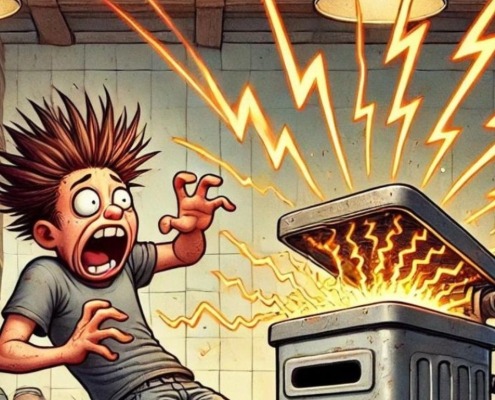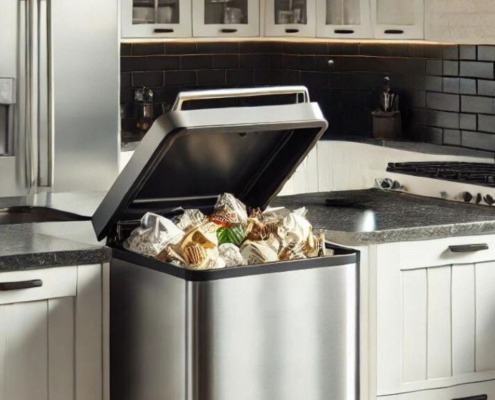How to replace an actuator switch on a Whirlpool trash compactor
Steven E / Tuesday April 29, 2025
Is your Whirlpool trash compactor not doing its job because of a faulty actuator switch? Don’t worry—you’re about to discover how easy it is to get it back up and running with just a few simple tools. Dive into our step-by-step guide below, complete with a handy how-to video, and say goodbye to trash compactor troubles today!
Looking for the right part? Enter your appliance model number below to find the exact match and get your appliance running like new again!
The actuator switch kit on a Whirlpool trash compactor is responsible for initiating the compaction cycle. Without a functioning actuator switch, the compactor may fail to start or run.
This repair should only take a few minutes to complete, making it a relatively straightforward task. By following the instructions provided in this guide, you will be able to successfully replace the actuator switch kit and have your trash compactor up and running again in no time. Let’s get started with the repair installation process.
Watch here: How To: Whirlpool/KitchenAid/Maytag Actuator Switch Kit W10342596
The information in this article may not apply to your specific appliance model. We recommend consulting your manufacturer’s documentation or contact us with any questions.
What you’ll need
- 1/4″ nut driver
- Flathead screwdriver
- Phillips screwdriver
- Utility knife
- Piece of wood
- Power drill
- 3/32″ drill bit
Safety precautions
- Always power off and unplug your appliance or switch off the circuit breaker before attempting any maintenance or replacement work. This keeps you safe by preventing any risk of injury from electric shock.
- Don’t test wiring with a multimeter for live voltage if you’re unfamiliar with how to prevent short circuiting when testing.
- When working with wires, avoid touching any exposed wires or terminals. If you need to touch a wire, use a non-conductive tool or wear insulating gloves to prevent electrical shock.
- Take your time and don’t rush while working to prevent accidents and personal injuries.
- Work in a well-lit area so you can clearly see and access the interior parts.
- Clear your workspace of clutter and other obstacles. Keep children and pets away from the work area.
- Never work on internal parts with bare wet hands. Make sure the work area is completely dry.
- Check your user manual to see if there are specific installation or safety instructions for your part or appliance.
- Be gentle when handling or removing parts. Excessive force might damage the appliance or cause injury.
- Wear insulated work gloves to protect your hands from sharp metal parts, pinching hazards and debris.
- Wear safety glasses when working with chemicals, dust or cleaning large debris to prevent injury.
Replacement steps
Removal
- Press down the pedal and pull out the drawer.
- Lift the front of the trash compactor up by the handle until it goes over the drawer stops.
- Take hold of the drawer by the sides and remove it from the compactor.
- Uninstall the trash compactor from the kitchen cabinet. It may be mounted to the countertop through the top brackets or through the sides at the front of the compactor.
- Pull out the trash compactor.
- Pull off the filter cover. Remove the charcoal filter.
- Using a quarter inch nut driver, remove the four screws on the top cover.
- Slide and lift the top cover off.
- Remove the machine front. Using a quarter inch nut driver, take out two screws on the top, two screws inside the trash compactor frame, and two screws outside at the bottom of the trash compactor.
- Pull the machine front panel from the body. Keep in mind that it’s still connected to a number of switches with electrical wires and can’t be completely removed.
- Using a flat blade screwdriver, take off the orange and double yellow wires from the top of the directional switch. This will provide more room to work.
- Using a flat blade screwdriver, remove the wires from the actuator switch.
- Push down the locking tabs and remove the old switch.
- Take off the pedal. Place the drawer assembly on its back and using a Phillips screwdriver, remove the two side screws and remove the pedal.
- Take out the two Phillips screws and remove the broken actuator from the pedal.
- Use a Phillips screwdriver to remove two screws and remove the old toe guard.
Installation
- Install the new toe guard and secure it with the two Phillips screws.
- Install the pedal and also secure it with a couple of Phillips screws.
- Install the new actuator switch with the terminals facing up and connect the wires.
- Reconnect the double yellow and orange wires to the directional switch.
- Reinstall the machine front panel and using a quarter inch nut driver, secure the six screws.
- Using a utility knife and a piece of wood, cut out the rectangular piece on the side of the template.
- Put the template over the switch. Use a knife to mark two holes and using a drill with a 3/32 inch drill bit, make two holes.
- Install the switch actuator and secure it with the two Phillips screws provided in the kit.
- Reinstall the top cover panel and secure it with the quarter inch screws.
- Reinstall the compactor and secure it to the cabinet.
- Reinstall the charcoal filter and put the charcoal filter frame on.
- Slide the drawer in, plug in the trash compactor, and test it.
Additional information
Thanks for reading! We hope this guide helped you replace the actuator switch kit on your Whirlpool trash compactor.
If you still need some replacement parts, grab your model number and head over to AppliancePartsPros.com. We offer over two million parts and most orders arrive in two business days. If you need some help with finding the right part or placing an order, you can contact our team at 1 (877) 477-7278.
While you’re waiting for your new part to arrive, you can explore our DIY blog and watch thousands of video tutorials on our YouTube channel.
Be sure to follow us on Facebook, Twitter and Instagram to see our latest repair guides!
With nearly a decade of experience in providing top-notch customer service regarding appliance parts and repair, Steven enjoys sharing practical advice, troubleshooting tips, and interesting information to help readers stay informed.





